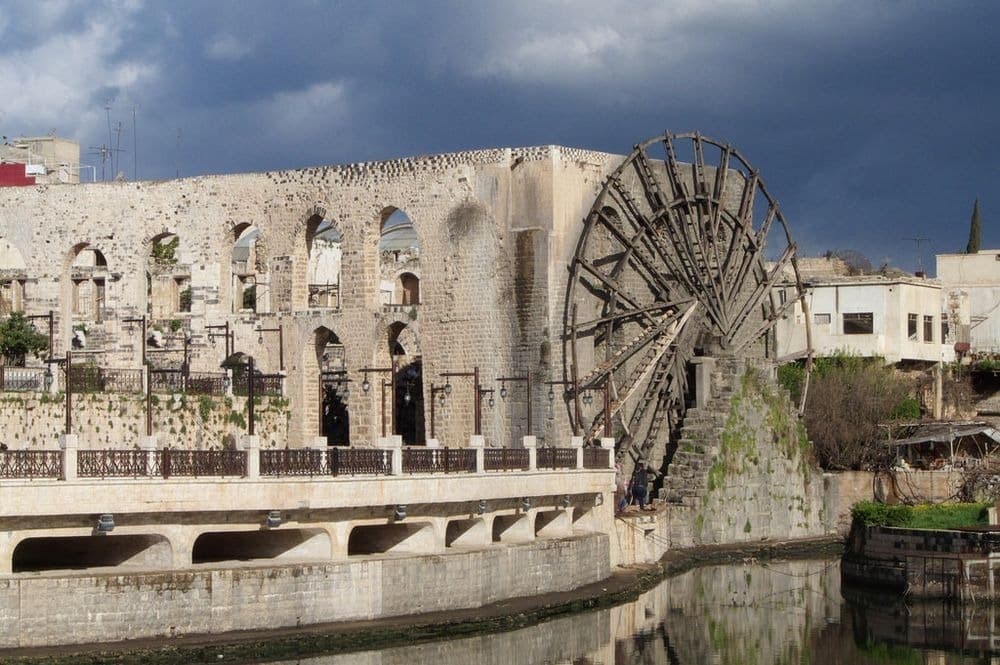More Than 500-Year-Old Giant Water Wheels Used To Provide Fresh Water To The Roman Aqueducts
The Norias of Hama is a series of 17 historic water-raising machines along the Orontes River in Hama, Syria.
Among these 500-year-old giant water wheels, the Noria al-Muhammadiya and Noria al-Ma’muriyya are particularly significant.
They are among the most notable examples of this ancient technology, and for centuries, they have played a crucial role in the region’s irrigation and water supply systems.
What is a Noria?
The word “noria” derives from the Arabic term “Na-urah,” meaning “the first water machine.”
This water wheel is designed to lift water from a river or well and distribute it via aqueducts to villages and agricultural lands.
Historically, norias were powered by the natural flow of a river, though some variations employed animal or human power.
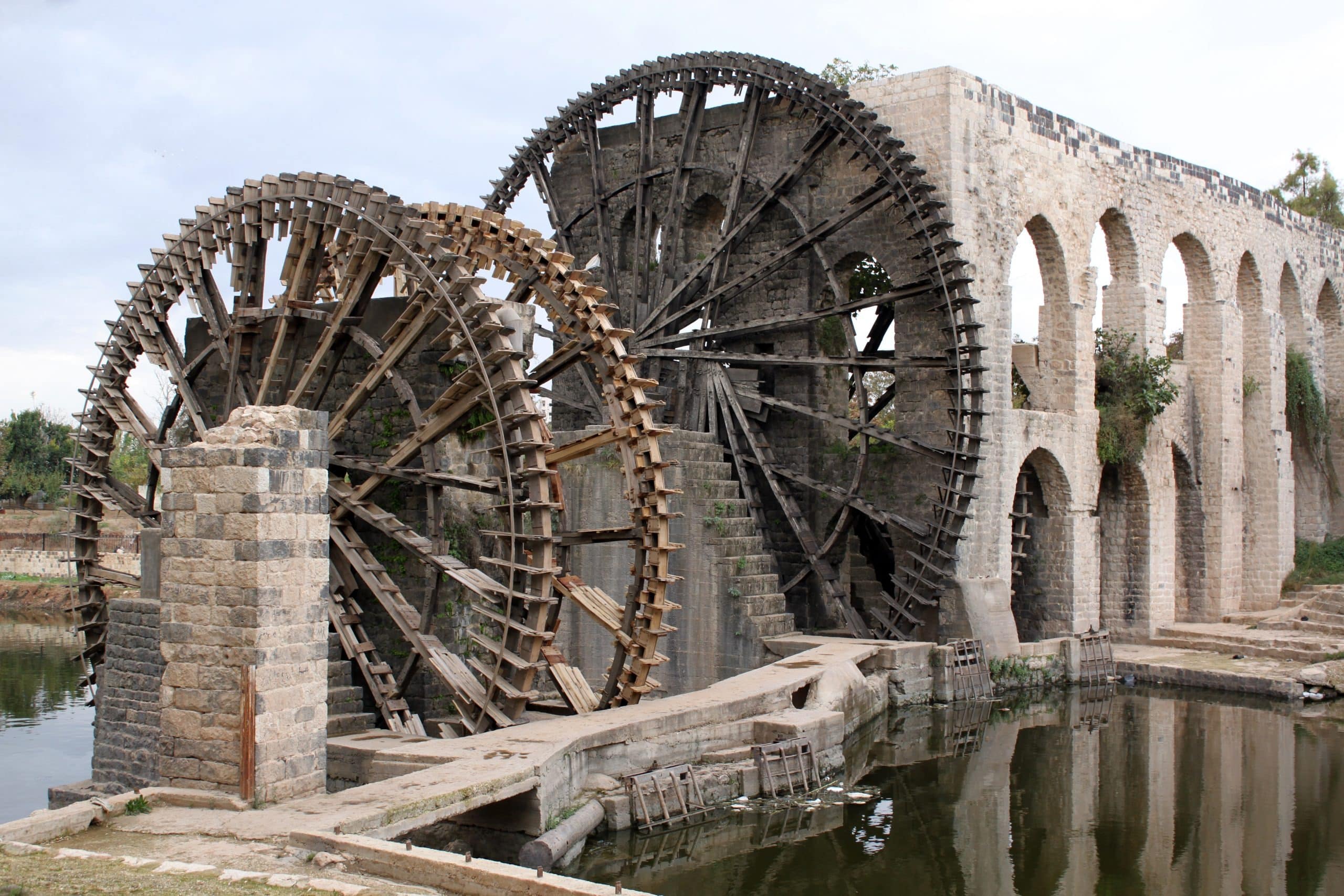
The design of a Noria
The basic design of a Noria includes a large vertical wheel equipped with radial blades or paddles.
Buckets or pots attached to the wheel’s rim would fill with water as they dip into the river and then be carried upward.
As they reach the top of the wheel’s rotation, the water would spill into a trough at the top.
The buckets would then return empty to the bottom, repeating the cycle.
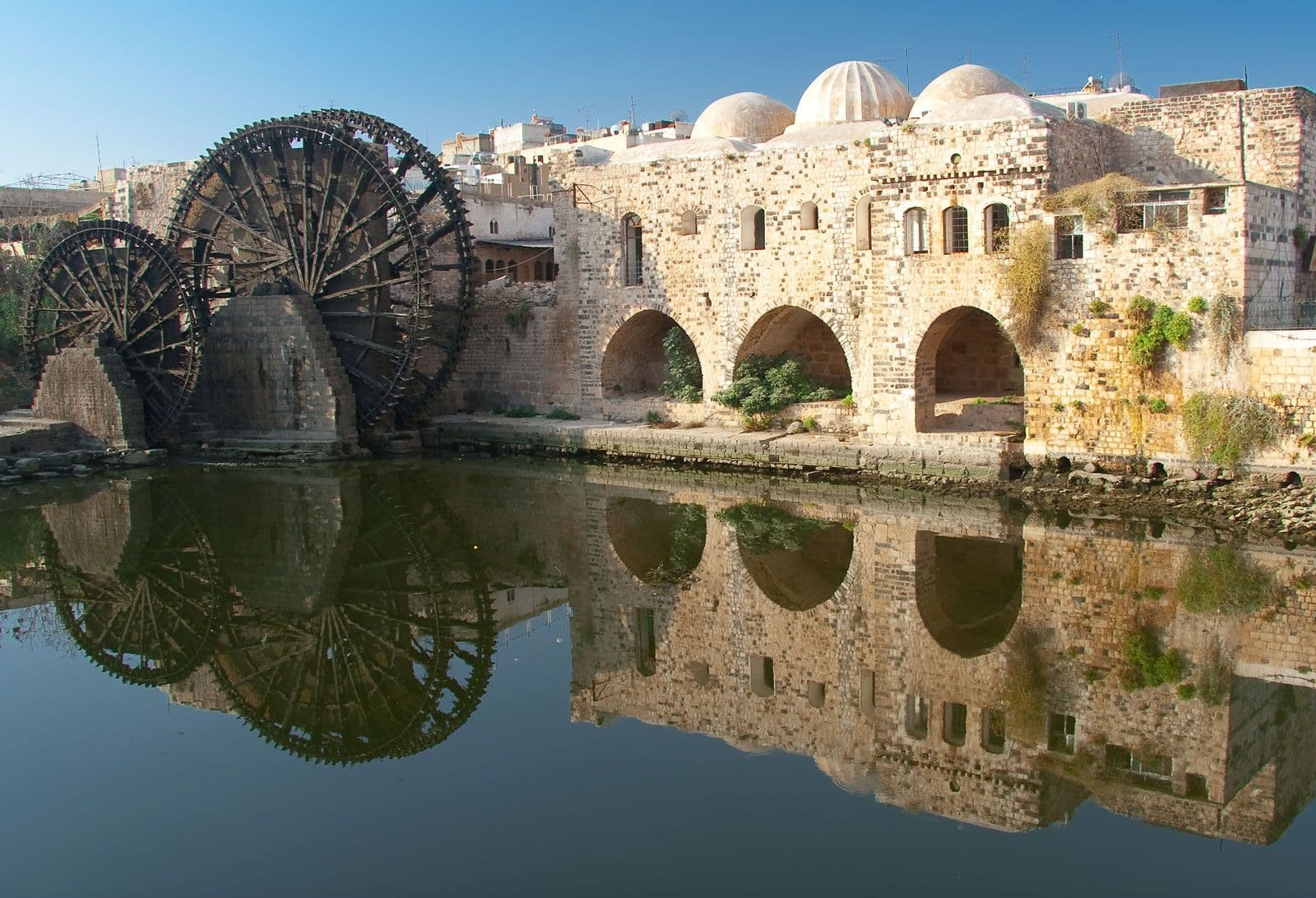
In ancient civilizations, where arid lands necessitated reliable irrigation methods, the noria became an essential tool.
Its invention and widespread use highlight the significant technological advancement and the need to cultivate land beyond the capabilities of direct rainfall.

Norias of Hama
The Norias of Hama is a series of 17 historic water wheels, some of which date back to at least the late 12th century AD.
These norias likely operated even earlier, possibly in the 9th century AD.
The Roman city of Apamea, located downstream from Hama, features mosaics and tiles depicting norias, indicating that these devices were in use as early as 350 AD.
When the region came under Muslim rule in the mid-7th century AD, the existing technologies, including norias, were further refined and expanded.
They were used to lift water from the Orontes River, enabling it to flow by gravity through aqueducts to irrigate gardens, supply water to households, and support various community needs.
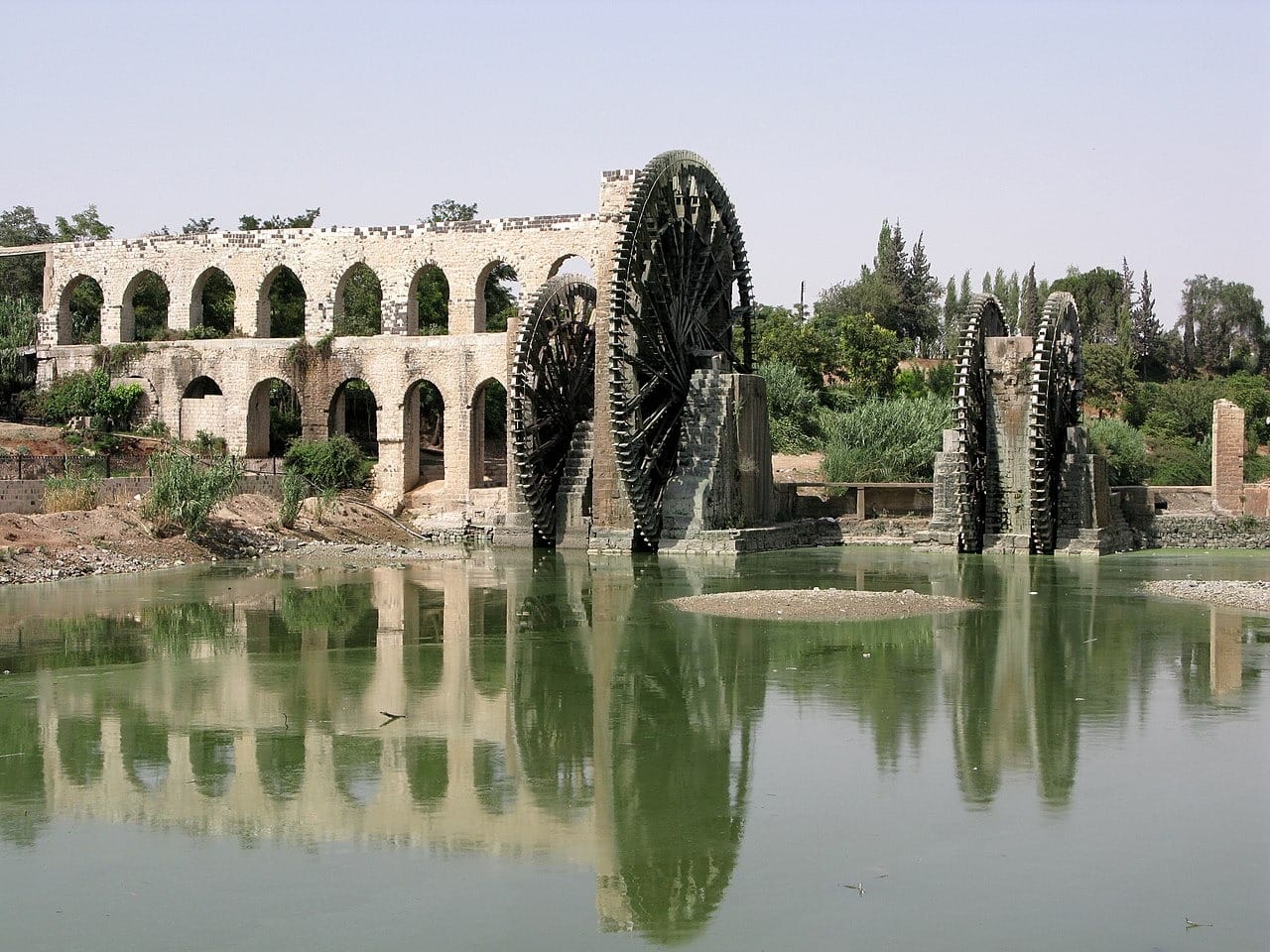
The Noria al-Muhammadiya, built in 1361 AD, and the Noria al-Ma’muriyya, from 1453 AD, are among the largest and most significant norias in Hama.
These wheels are constructed from different types of wood, with walnut used for the axles and bearings, and poplar, pine, and oak for other parts.
The Noria al-Muhammadiya
One of the most notable norias in Hama is the Noria al-Muhammadiya, built in 1361 AD.
This gigantic wheel stands 21 meters tall and can raise 200,000 liters of water per hour.
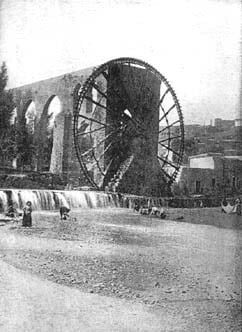
Its construction required a long weir at an acute angle to maximize the river’s power on the wheel’s base.
The Noria al-Muhammadiya was built to supply water to the Great Mosque of Hama and various other buildings and gardens, highlighting its critical role in the community.
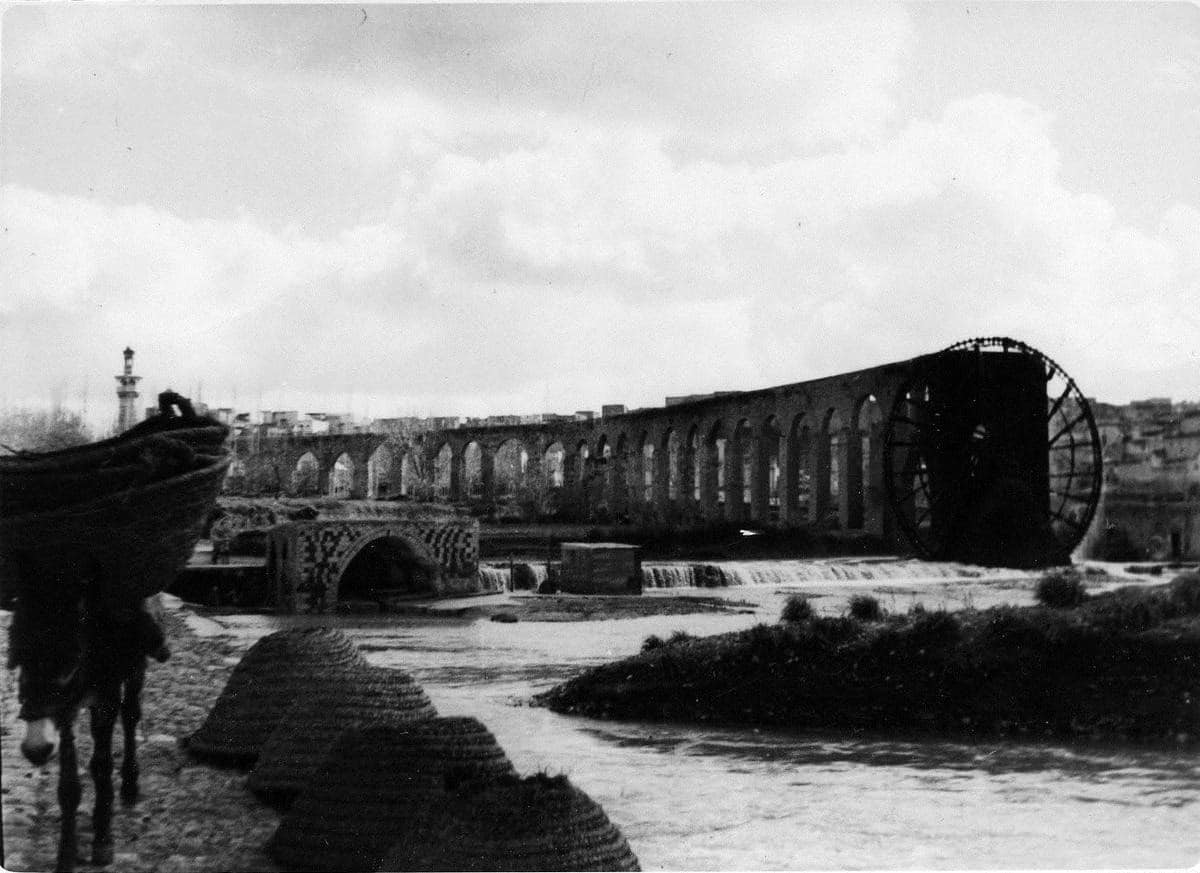
The Noria al-Ma’muriyya
Like Noria al-Muhammadiya, Noria al-Ma’muriyya also dates back to the medieval period, though specific records of its construction are less detailed.
It is believed to have been built around the same time, during the Mamluk Sultanate.
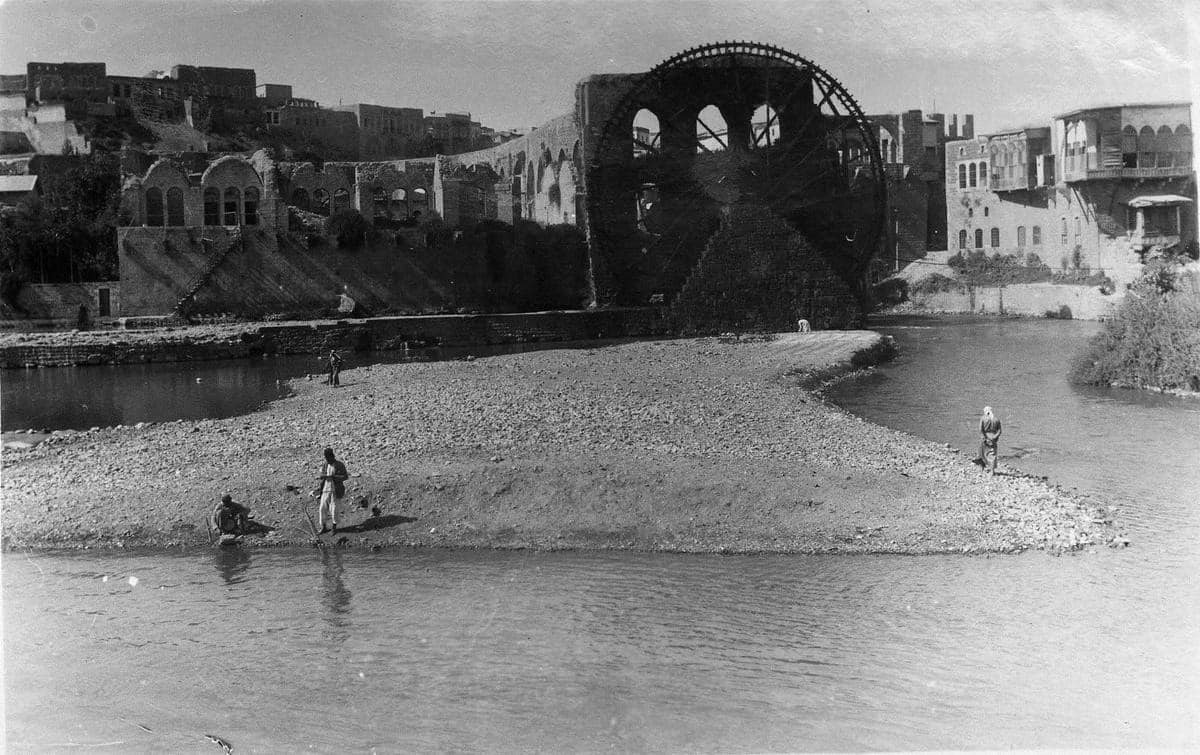
Noria al-Ma’muriyya is slightly smaller than Noria al-Muhammadiya, yet still an engineering marvel with a diameter of around 20 meters (66 feet).
The construction materials and methods are similar, utilizing various types of wood for different components to ensure durability and efficiency.
How were Norias of Hama constructed?
The construction of a noria involves intricate carpentry and engineering skills.
The wheels, often measuring up to 21 meters in diameter, are constructed using different types of wood: walnut for the massive axles and bearings, and poplar, pine, or oak for other components.
These wheels are of the ‘undershot’ type, driven by water flowing underneath and pushing against the paddles.
Small wooden compartments embedded along the wheel’s rim collect water, which is then poured into aqueducts as the wheel rotates.
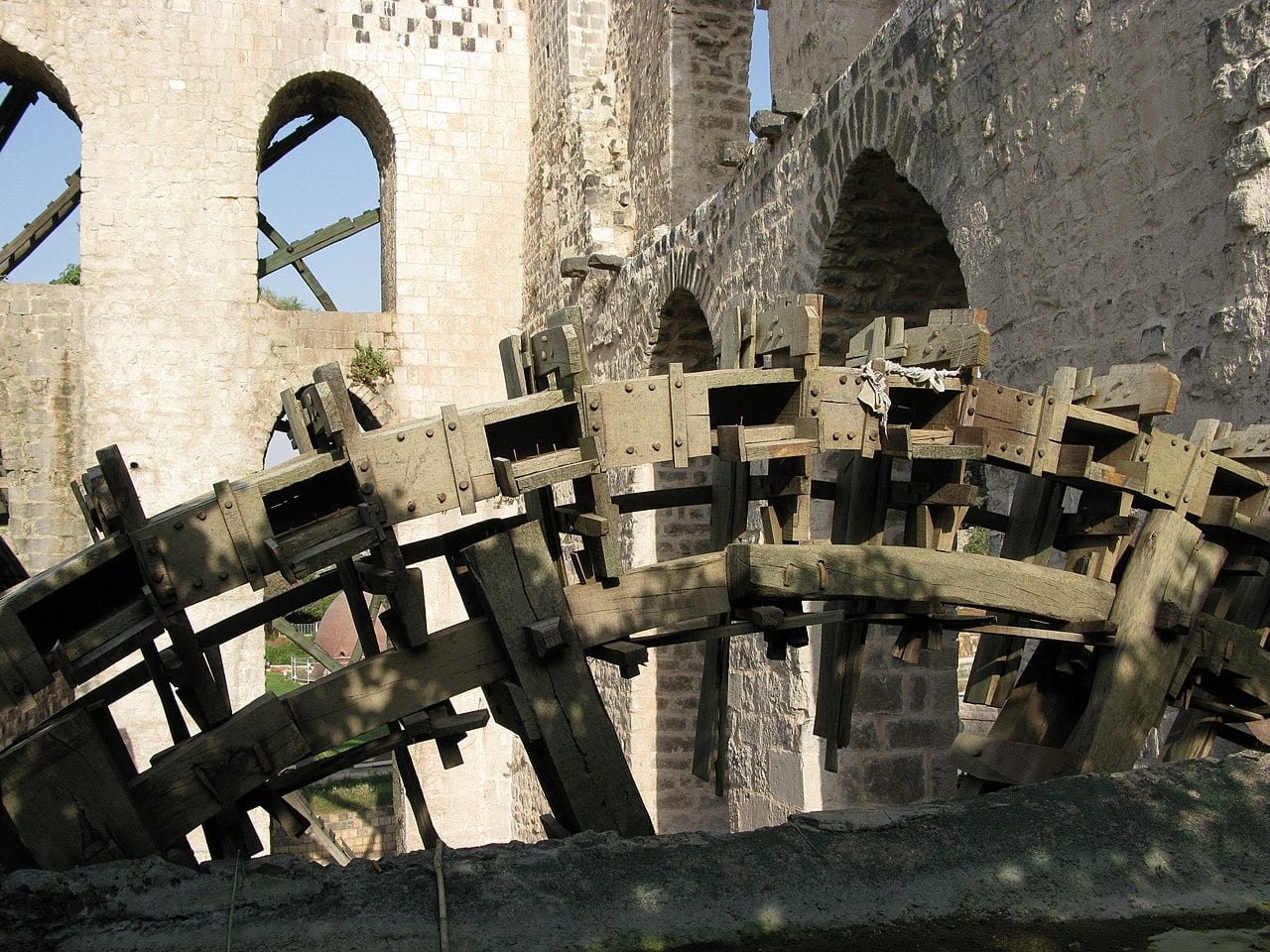
Hama’s norias are strategically placed downstream from weirs—low dams that concentrate the river’s power to turn the wheels.
The aqueducts, built on tall stone arches, receive the water from the norias and transport it to various destinations.
Some aqueducts are several hundred meters long, although many have been truncated over time due to lack of maintenance or deliberate demolition.
How are the Norias today?
While the norias of Hama no longer serve their original purpose of irrigation, they remain a symbol of historical and technological heritage.
Recognized for their medieval origins and advanced engineering, these water wheels are celebrated for the striking sights and sounds they create as they turn.
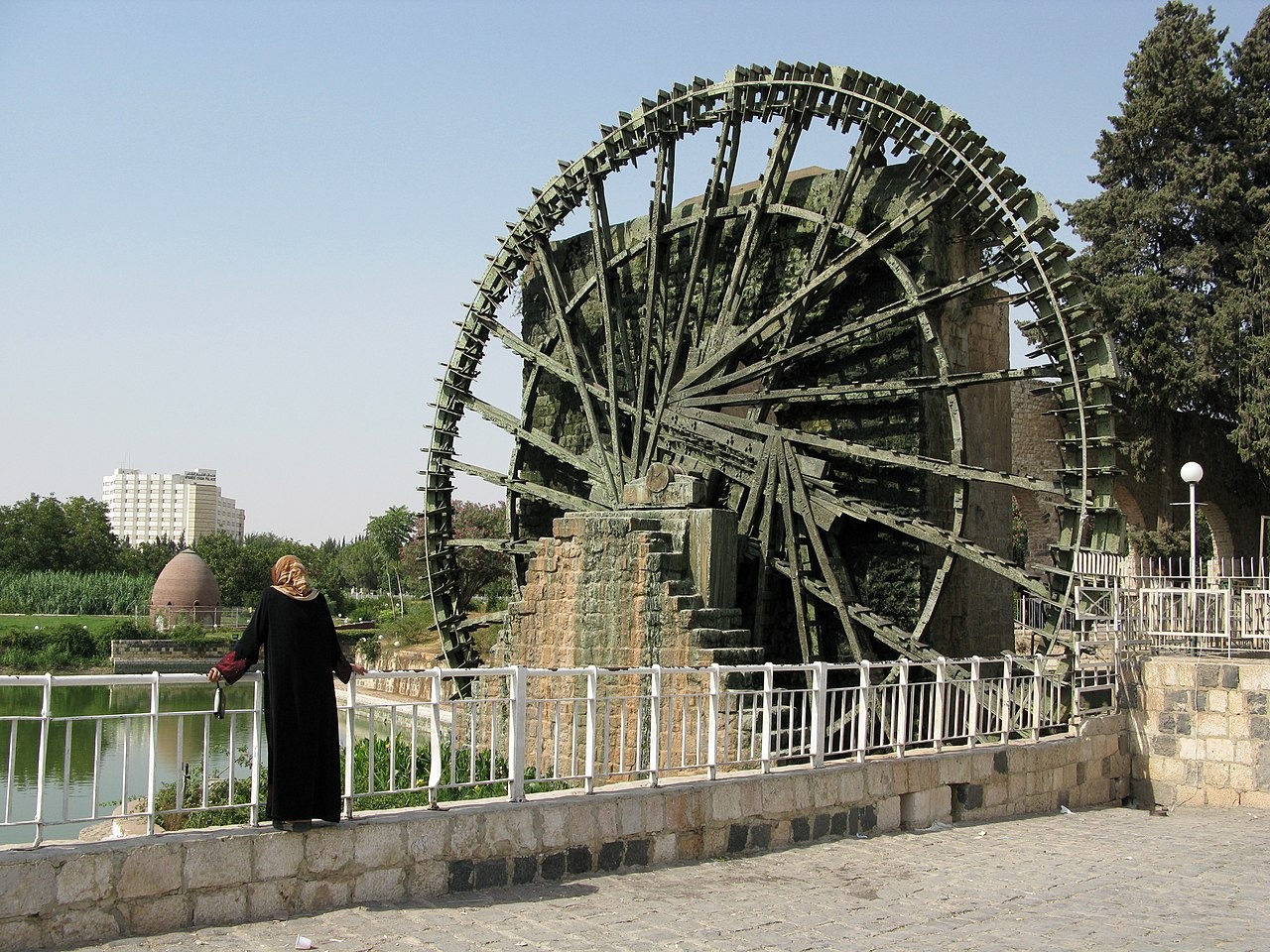
In 2006, the American Society of Mechanical Engineers designated the Noria al-Muhammadiya as a Historic Mechanical Engineering Landmark, marking its significance in the history of technology.
